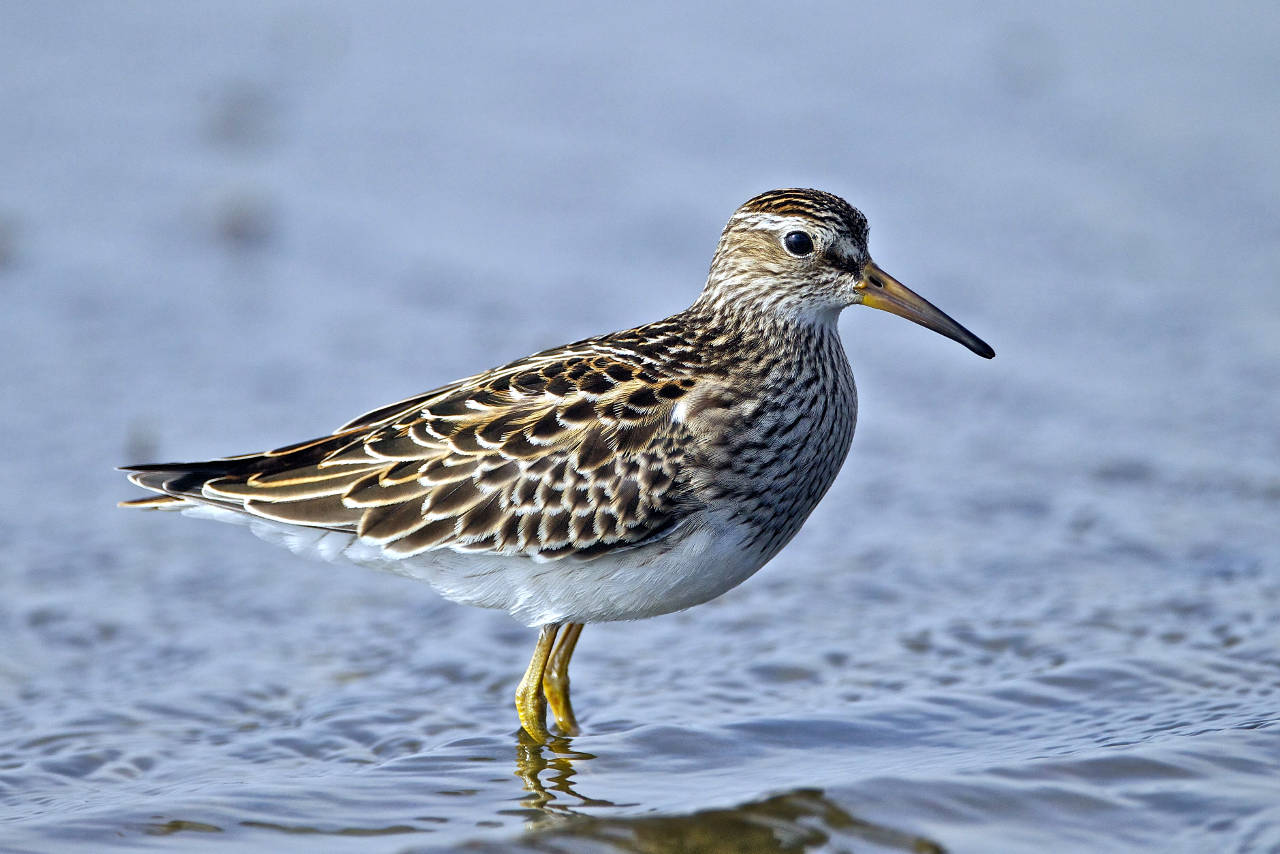By Dianna Moore
Grays Harbor Audubon
I have been out looking at birds and it is time to start talking fall migration…yes, already. Since I live at the beach, that is my logical place to see what is happening and what I am seeing is a large number of shorebirds gathering to eat as fast as they can to bulk up for the long voyage ahead. The Pectoral Sandpiper is a great starter because we only see it in any reliable numbers during fall migration.
General Description: The Pectoral Sandpiper is a robin-sized shorebird with a heavily-streaked breast, a sharply delineated white belly and yellowish legs. The bill is a light brown with black at the tip and droops. The upper wing has a very narrow stripe and in fight, the tail has a darker brown stripe down the center and white on either side. Males are larger than females and have inflatable sacs in their chest that produce the sounds during courtship.
Habitat: Pectoral Sandpipers breed all across the North American Arctic and northern Siberia at the dry edges of well-vegetated wetlands. During migration they can be found in fresh and salt-water marshes, on mudflats, and in wet meadows. They winter in the grasslands of South America.
Behavior: These birds move steadily, heads down probing the sand and mud with their bills and picking up prey off the ground or on the surface of the shallow puddles. They usually forage in vegetation and when disturbed stand upright with extended necks to peer over the tops of the grasses.
Diet: During the breeding season Pectoral Sandpipers eat flies and fly larvae, spiders, and some seeds. During migration they add small crustaceans and other aquatic invertebrates to their insect diet.
Nesting: Pectoral Sandpipers are promiscuous, with both sexes mating with multiple partners. Once the males establish a breeding territory they use both flight displays and those air sacs I mentioned to attract a mate. The female builds a nest in a grassy spot on slightly elevated ground The nest is usually a well-hidden scrape lined with grass and leaves. She provides all the parental care for the 21 to 23 days of incubation. The young (usually four) leave the nest and are able to feed themselves soon after hatching. The female stays with the young for 10 to 20 days. The young start flying at about 21 days and are capable flyers by 30 days of age.
Migration: Pectoral Sandpipers are one of the extreme long-distance migrants, making up to an 18,000-mile round-trip between breeding and wintering grounds. Most birds that migrate through Washington breed in Siberia and migrate across the Bering Strait and down the Pacific Coast. They over-winter in South America, Australia and New Zealand.
Conservation Status: Habitat destruction is currently the most significant threat, but we don’t have enough data on population trends. For now it is not considered a species in need of high-priority conservation.
When and Where to Find on Grays Harbor: About the only times we see this bird on the Harbor is during fall migration, and a few of the best spots are the usual: Around the edges of the Hoquiam sewage treatment lagoons, Oyhut Wildlife Area in Ocean Shores and Bottle Beach SP in Ocosta. It’s well worth the effort.



